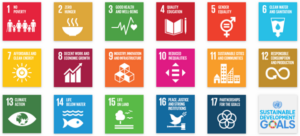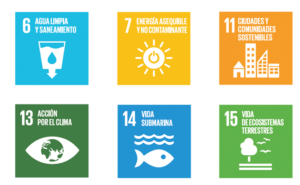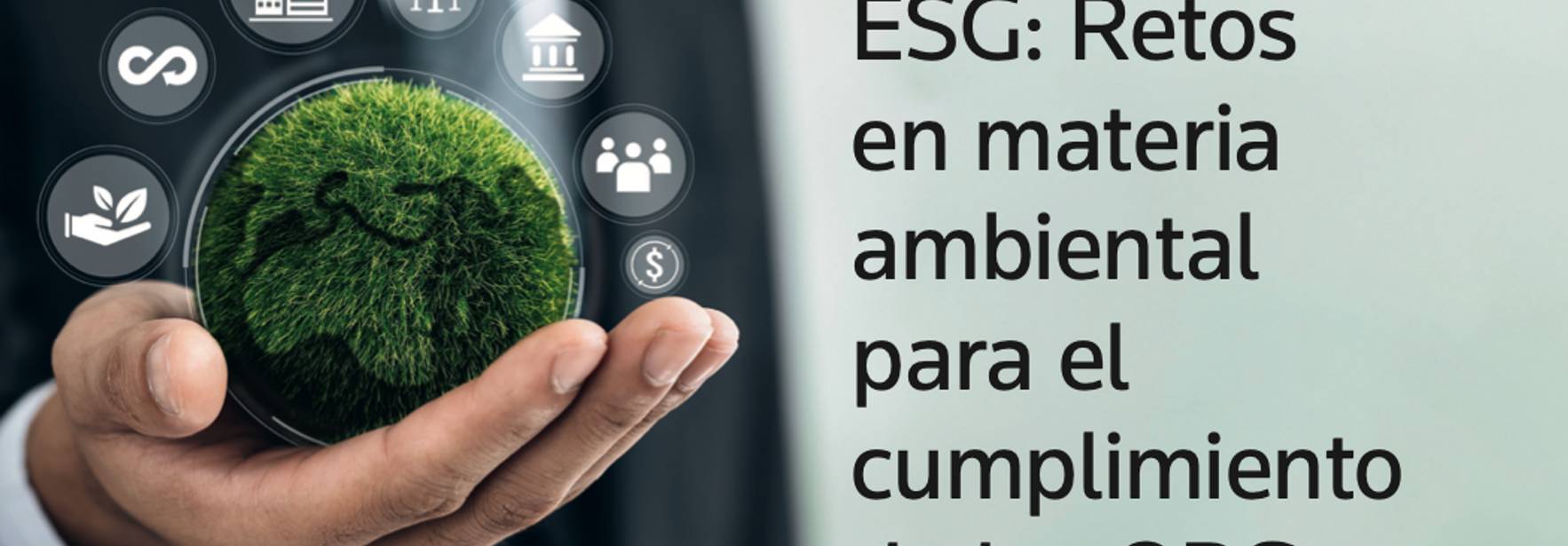The "E" of ESG: Environmental Challenges for meeting the SDGs
In 2015, the United Nations (UN) approved the 2030 Agenda for Sustainable Development (2030 Agenda), which includes 17 goals aimed at protecting people, the planet, and generating conditions for economic and social prosperity. Environmental, Social, and Governance (ESG) criteria are fundamental tools for achieving these goals. They are complemented and reinforced through individual and collective actions of the involved actors - government, businesses, and civil society. Lawyers play a pivotal role in implementing these actions. This article addresses the aforementioned points, as well as provides a description of the main instruments of environmental policy and significant challenges within the Mexican context for attaining the Sustainable Development Goals (SDGs).On September 25, 2015, the United Nations General Assembly adopted the 2030 Agenda. This action plan centers around fulfilling 17 goals that aim to enhance the lives and futures of people worldwide through economic development, social progress, and environmental protection. The SDGs constitute a set of objectives that serve as the foundation for achieving sustainable development across its three dimensions - environmental, social, and economic - ensuring inclusivity for all. These goals are integrated and indivisible, possessing global scope and universal applicability. They consider varying realities, capacities, and developmental levels of each country, while respecting national policies and priorities.[1]
Consequently, the SDGs will direct the national development plans of the 193 countries that have endorsed the 2030 Agenda. While each nation will establish its own objectives based on its circumstances and priorities, a resolute commitment to achieving these goals is evident.
The SDGs are as follows: [2]

Given their purpose and cross-cutting nature, compliance with the SDGs requires the participation of the public, private and social sectors. Therefore, it is necessary to make use of various mechanisms and instruments, such as ESG criteria, to achieve them.
ESG Criteria
These guidelines pertain to environmental, social, and corporate governance principles that investors consider when investing their money in a company. The aim is for their investment to have a positive impact on these aspects, or simply put, the objective of the investment is for it to be "sustainable" in every sense of the word.
- Environmental Criterion: This criterion evaluates the positive (or negative) impact that a company's projects have on the environment. Aspects to be evaluated include, for example, the level of carbon dioxide emissions generated, the amount of waste produced, the use of energy (preferably from renewable sources), responsible water management, and so on.
- Social Criterion: This criterion refers to the effects that a company's activities and projects have on communities. For example, it involves respecting labor rights, promoting diversity and inclusion within the entity, and adopting best practices when working with indigenous communities.
- Corporate Governance Criteria: The care taken by the company in managing its assets and liabilities, its corporate structure, and transparency policies are evaluated. This present issue precisely focuses on the environmental criterion, discussing aspects that are of importance in its application, especially by governments and companies.
ESG AND ODS CRITERIA: ENVIRONMENT
As mentioned above, the environmental aspect of the ESG criteria analyzes the effects that companies' activities have on the constituent elements of the environment: water, atmosphere, soil, and biodiversity. In this sense, the correct application of this aspect leads, in particular but not exclusively, to the fulfillment of the following SDGs:

However, in the case of Mexico, it is important to address the environmental policy instruments that enable the fulfillment of these SDGs.
ENVIRONMENTAL POLICY INSTRUMENTS
Public policy instruments for environmental protection are classified into different categories; however, all of them legitimize state intervention to respond to the problems to be faced in this area.[3]
Generally speaking, such instruments can be classified as direct (command and control), economic (fiscal, financial, or market-based), administrative (licenses, permits, authorizations, etc.), and educational. Depending on their utilization, these instruments can exert a substantial influence on compliance with the environmental dimension of the ESG criteria. These instruments must be applied in an integrated manner for implementing various projects across all sectors.
The General Law of Ecological Balance and Environmental Protection (LGEEPA) formally recognizes the following instruments:
- Environmental planning (Article 17).
- Ecological management of the territory (Article 19).
- Economic instruments (Article 21).
- Environmental regulation of human settlements (Article 23).
- Environmental impact assessment (Article 28).
- Mexican Official Standards (NOM) in environmental matters (Article 36).
- Self-regulation and environmental audits (Article 38).
- Ecological research and education (Article 39).
- The declaration and management of natural protected areas.
- Access to environmental information and citizen participation.
- Surveillance, inspection and supervision.
- Technical and justification studies to authorize land use changes in forest lands.
Environmental impact assessment
It is an iterative, integral, and participatory process in which various other environmental management instruments converge. This process is indispensable for projects that hold legal significance in terms of their environmental impact..[4]
The environmental impact assessment procedure begins with an Environmental Impact Assessment (EIA). This is an integral and complete study of the project, which must include, among other elements, the description of the proposed works and activities, the description of the environmental impacts, the proposals for prevention, mitigation and compensation of such impacts based on the best available information and the best environmental practices.
The legal linkage of all of the above, in accordance with the regulations, in order to ensure compliance with the different laws on the subject.[5]
During the preparation of the EIA and subsequently throughout the evaluation and eventual resolution of the procedure, various environmental policy instruments applicable to the project in question converge. These may include NOMs with specific emissions parameters and/or design limitations, land-use planning programs, and management strategies for protected natural areas, among others. The procedure is designed to allow for citizen participation when necessary, involving project presentations in the concerned community and soliciting input from individuals and non-governmental organizations.
Ultimately, the procedure culminates in a resolution that not only considers the proposals put forth by the project proponent but also outlines the terms and conditions to ensure the project's environmental, social, and legal viability. This resolution is issued by the environmental authority, which could be entities like the Ministry of the Environment and Natural Resources (Semarnat), the Safety, Energy, and Environment Agency (ASEA), or a state-level authority. These terms and conditions necessitate monitoring by technical and legal advisors to guarantee compliance. [6]
Self-regulation
Self-regulation is another environmental policy instrument that, in the coming years and with the application of ESG criteria, will become extremely important. It is certainly desirable that both authorities and individuals make the best possible use of this voluntary mechanism, on the one hand, to maximize environmental compliance and, on the other, to provide benefits to those projects that could be classified as "sustainable". An example of this instrument is the National Environmental Auditing Program (PNAA), which, based on the audit, allows companies to learn, on a voluntary basis, about their environmental compliance through a diagnosis, which seeks to enable companies to improve their environmental performance so that it is higher than required by law and so that good environmental practices can be implemented. This allows organizations to become certified on a voluntary basis and obtain benefits such as the implementation of an internal environmental management program, reputational benefits and even improvements that translate into significant long-term savings.[7]
Certainly, this environmental policy instrument possesses numerous opportunities for enhancement, and it remains crucial to bolster the institutional capacity of the Federal Attorney's Office for Environmental Protection (Profepa) to ensure the verification of the quality with which environmental assessment procedures are conducted.
THE CHALLENGE FOR COMPANIES IS TO "CLOSE THE GAP".
The environmental SDGs hold broad applicability and significance for projects and businesses across diverse sizes and sectors, demonstrating interdependence with other goals. Consider, for instance, the correlation between "clean water and sanitation" and access to "clean and affordable energy." This interplay becomes evident when examining the energy-intensive water consumption in locations like Mexico City (sourced from Cutzamala) or the operation of thermoelectric, hydroelectric, and nuclear power plants that rely on water. Therefore, a significant challenge in achieving the SDGs involves the capability of companies and governments to reshape their processes and policies, incorporating novel tools, and advocating that their counterparts also adopt these changes. In this domain, lawyers and technical consultants play a pivotal role. SDG 13, "Climate Action," which holds cross-cutting implications for all other goals, serves as a notable case study.
A primary step is the calculation of the carbon footprint (CDH), which enables companies to ascertain the Greenhouse Gas (GHG) emissions stemming from their operational activities. This analysis initiates the reevaluation of strategies to curtail emissions. The GHG protocol stands as the widely embraced tool for CDH measurement. According to this protocol, GHG emissions are categorized into three distinct "scopes":
- Scope 1 or direct emissions: Direct emissions occur from sources owned or controlled by the company. For example, emissions from combustion in boilers, furnaces, vehicles, etc..8
- Scope 2 or indirect GHG emissions associated with electricity: Includes emissions from electricity generation purchased and consumed by the company. Purchased electricity is defined as electricity that is purchased or brought within the company's organizational boundary.
- Scope 3 or other indirect emissions: Refers to all indirect emissions that occur in a company's value chain. [9]Scopes 1 and 2 are relatively accessible to all companies, since they require a diagnosis of their CDH within the organization itself. However, the challenges are in scope 3, since it requires detailed information on the company's suppliers. Depending on the sector and size of the company, a significant part of the emissions may come from this level.
Some of these areas, particularly with reference to SDG 13, encompass: GHG monitoring and reporting, implementing mitigation measures to prevent carbon absorption loss due to changes in forest land use, adopting new obligations related to the circular economy, validating sound practices in sustainable taxonomy-based financing, and more. Without a doubt, this presents a significant challenge for companies, governments, and decision-makers, necessitating active contribution from advisors and lawyers.
[1] General Assembly Resolution A/RES/70/1. "Transforming our world: 2030 Agenda for Sustainable Development." September 25, 2015. See at: https://agenda2030.mx/docs/doctos/A_RES_70_1_es.pdf
[2] Images taken from: https://www.un.org/sustainabledevelopment/es/
[3] Anglés Hernández, Marisol, Rovalo Otero, Montserrat and Tejado Gallegos, Mariana. Manual de Derecho Ambiental. Mexico. Instituto de Investigaciones de Derecho Ambiental Jurídicas (IIJ)-Universidad Nacional Autónoma de México (UNAM). 2021, p. 59
[4] Whether they are included in the list of works and activities of Article 28 of the LGEEPA, or whether they are included in the list of works and activities of Article 28 of the LGEEPA, or whether they are included in the list of works and activities of Article 28 of the LGEEPA. activities under the corresponding state jurisdiction
[5] Articles 11 and 12 of the Regulations of the General Law of Ecological Equilibrium and Environmental Protection regarding environmental impact assessment. (RLGEEPAIA)
[6] From the article "Main Conditions of an Environmental Impact Authorization". See at: https://carlosdelrazo.com/2022/11/11/principalescondicionantes-of-an-environmental-impact-authorization/
[7] Excerpt taken from "Política ambiental y sus autoridades centralizadas". See at: https://carlosdelrazo.com/2023/01/24/politica-ambiental-y-susautoridades-centralized/
[8] World Business Council for Sustainable Development. World Resources Institute. Greenhouse Gas Protocol. 2005, p. 29
[9] Carbon Trust. "Summary: What are Scope 3 emissions?". See at: https://www.carbontrust.com/es/nuestro-trabajo-e-impacto/recursos/ summary-what-are-range-emissions-3
